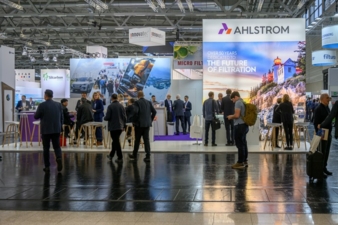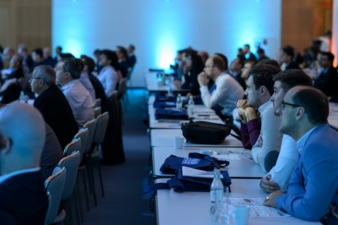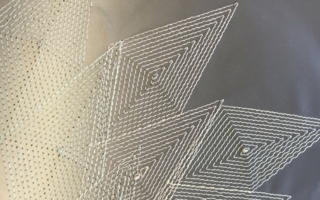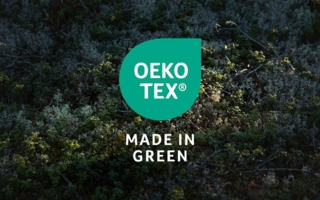24/01/2025 – Filtech 2024 — auf Deutsch lesen
Possibilities for enhancing filter efficiency
Advanced air and water filtration systems meeting the stringent safety standards were comprehensively showcased by more than 590 exhibitors at the Filtech 2024 exhibition and conference held in Cologne, Germany.
At the 2024 event, many forward-looking new concepts for optimising filter efficiency – from the customisation of high performance membranes at the nanoscale to the adoption of AI and digital twins – were introduced to delegates.
Media trends
In terms of filter media trends, it was particularly notable that the integration of nanofibre particles and webs into nonwovens is gaining increasing importance and the accommodation of sustainable raw materials as an alternative to synthetics was another key theme. Linking the two together, leading manufacturers of nanofibre production technology such as Elmarco and Invenso and their customers are widely exploring the introduction of renewable feedstocks and environmentally friendly solvents in the production of electrospun nanofibres.
Promising new feedstock candidates include PETG – a cost-effective polyester derivative as an eco-friendly alternative to PET which eliminates the need for processing with fluorinated solvents – as well as polylactic acid (PLA) and polycaprolactone (PL). Natural cellulose is also now being electrospun into ultrafine fibres as small as 300nm, possessing low thermal expansion while remaining lightweight yet strong. Chitosan is another bio-based polymer with excellent water uptake properties being used to form hydrogels. Green solvents are also being developed to replace toxic substances or those derived from petrochemicals in electrospinning.
Nonwovens innovation
Significant nonwoven media developments introduced included MecNa, from Mativ brand Gessner, which unlike many nonwovens incorporating layers of continuous electrospun nanofibres, is characterised by individual nanofibres directly integrated into the nonwoven at formation stage, to enhance both durability and performance. This media was initially developed in response to the Covid-19 pandemic, when guaranteed efficiency for critical healthcare-related filtration applications became essential.
In another interesting development, ProLine from Hollingsworth and Vose is a patented a new media which not only provides gradience in density, but also in fibre orientation. Typically, to achieve higher dirt holding capacity for a given efficiency, a filter media is designed to be dual phase, with a gradient density in the Z direction. The result is a significant improvement in dirt holding capacity and air permeability for a given required efficiency. A substantial rearrangement of the fibres in ProLine media generates both a higher surface area and new channels for air and liquid contamination capture.
Faster pleating
In another notable trend, filter media pleating – a process unique to this industry – is becoming ever more widely adopted as technology suppliers increase performance speeds. Through pleating, filters can offer increased surface area and density without impacting airflow, enabling more particles to be collected without increasing pressure drop or energy consumption. The developers of pleating technology such as Switzerland’s JCEM, Germany’s Roth Composite Machinery and India’s A2Z Technologies are continuing to enhance their machines and at Filtech 2024 models were demonstrated inserting pleats with depths of between 24-40mm into nonwoven filters at speeds of over 500 per minute.
We have captured our highlights of Filtech 2024 in a picture gallery.
Filtech 2026 will take place in Cologne from 30 June to 2 July.





